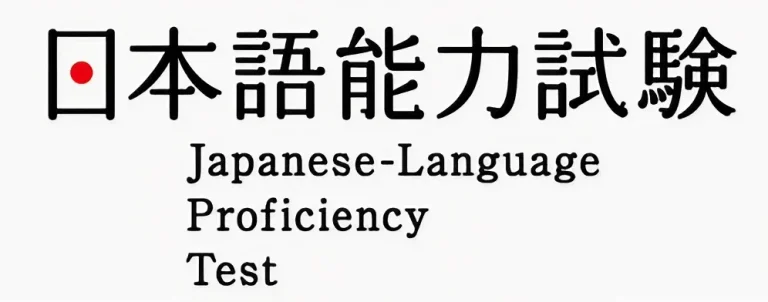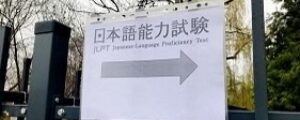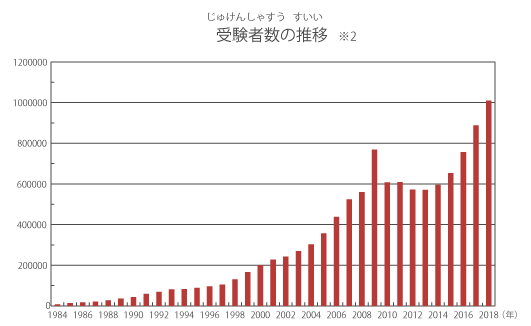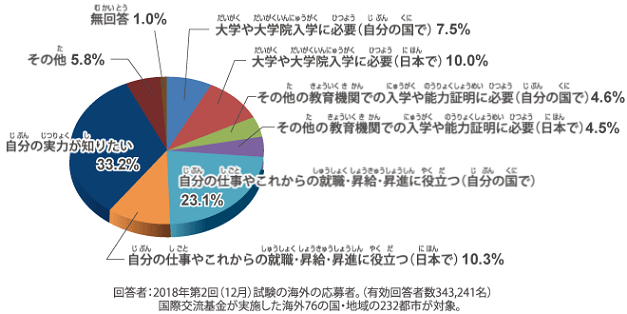JLPT N2 Practice Test
Discover the essentials of JLPT N2 on this page, designed for beginners of Japanese language proficiency.
Here, we provide a concise overview of the exam’s structure and key components, along with a practice test to help you gauge your preparation.

All About JLPT N2 with the Practice Test
What Japanese Language Learners Need to Know to Pass JLPT N2
- What level of Japanese proficiency should I expect from someone with JLPT N2?
- How difficult is the JLPT N2?
- How useful will an N2 be in real business situations?
- I want to know more about the content of the N2 exam for learners who want to pass the N2!
Click here for online Japanese lessons with the best Japanese tutor for passing the JLPT.
It is held twice a year, in early July and December.
To apply for the upcoming JLPT N2 exam, please click here:

Take the JLPT N2 practice test now
Let’s try a JLPT N2 mock test.
Vocabulary & Reading: 105min, Listening: 50min
This practice test is slightly different from the actual number of exam questions and question format on the actual N2 test. Please purchase the latest practice exam questions to make sure. Source: Japanese-Language Proficiency Test Worldwide Official Website.
If you have any questions, ask them for free! ➡ Japanese Question Form
Kanji List for Passing JLPT N2
This is a list of kanji required to pass the JLPTN2. Learn 367 kanji to pass the exam.
Reading comprehension strategies for passing the JLPT N2
The level goes up from N5 to N1, but the exam pass rate (certification rate) was N1: 29.3%, N2: 36.0%, N3: 39.4%, N4: 32.7%, and N5: 47.6% for the first exam of 2019 (July).
Except for N5, which was the easiest, the rest were in the 30% range, and even N1 was below 30%. About 70% of the students failed the test, which means that it is a very difficult test.
Among them, it is said that many people cannot pass the test because of their low score in reading comprehension.
Why can’t test takers get a good score in reading comprehension?
Why is reading comprehension on the JLPT so difficult? Reading comprehension requires you to read a number of sentences quickly within a limited time, understand the content accurately, and answer the questions accurately. The texts contain all kinds of elements such as vocabulary, grammar, and expressions, so in a sense, it is an exam that tests your overall Japanese language ability.
The number of test takers for the JLPT (Japanese Language Proficiency Test)
The number of test takers for the JLPT continues to grow every year.
The reason for this is that the number of people learning Japanese is increasing every year.

Refer to the JLPT official website.
- According to the latest data, the number of examinees per year exceeds about 1 million. (Exams held in July and December 2019)
- According to the latest data, the annual number of examinees is over 1 million.
- The number of examinees by level is as follows: N2, N3, N1, N4, and N5.
- JLPT N2 has the highest number of examinees, and JLPT N5 has the lowest number of examinees.
- In addition, the number of test takers by level is skewed by country and region.
- In East Asia, such as South Korea and China, the number of examinees taking the JLPT N1 and N2 tends to be higher.
- In Southeast Asia, such as Thailand and Vietnam, the number of examinees for JLPT N3, N4, and N5 is higher.
JLPT N2 Test Outline
日本語能力試験N2〈試験概要〉 | |
Language knowledge (letters, vocabulary, grammar), reading comprehension | 105分 |
listening comprehension | 50分 |
Refer to the JLPT official website.
- All questions are in mark-sheet format.
- The Japanese Language Proficiency Test (JLPT) is a test that measures knowledge of Japanese vocabulary and grammar, reading comprehension, and listening comprehension.
- Of the four skills, there is no part that directly measures speaking and writing skills.
How difficult is the JLPT N2?
N2, the most difficult level, can be certified as the following level according to the official website of the Japanese Language Proficiency Test.
| Guidelines for JLPT N2 Certification | |
| In addition to understanding Japanese used in everyday situations, some understanding of Japanese used in a wider range of situations | |
| Reading |
|
| Listening | To be able to listen to coherent conversations and news at a natural speed in a wide range of situations in addition to everyday situations, and to understand the flow and content of the conversation, the relationships between characters, and to grasp the gist. |
Refer to the JLPT official website.
Passing Score and Pass Rate
- The score is 180 points, and the scores are distributed as follows.
JLPT N2 Passing Score (JLPT N2の合格点)
Score Classification | Score Range |
Language knowledge 言語知識(文字・語彙・文法) | 0~60 |
Reading comprehension 読解 | 0~60 |
Listening comprehension 聴解 | 0~60 |
総合得点 | 0~180 |
- The passing score is 90 points (out of 180 points).
- The passing score includes a minimum of 19 points in all parts of language knowledge, reading comprehension, and listening comprehension.
- The pass rate is about 35% to 55% every year.
What is the Japanese Language Proficiency Test (JLPT)?
Overview of the JLPT
The Japanese-Language Proficiency Test (JLPT) is a language proficiency test for non-native speakers of Japanese (Japanese nationals are also eligible to take the test).
- Sponsored by: Japan Educational Exchanges and Services and The Japan Foundation
- It has been conducted since 1984.
- Can be taken in Japan and in 87 countries and regions around the world
- Date of administration: Basically July and December (twice a year)
- English name: “Japanese-Language Proficiency Test (JLPT)
Features of the JLPT exam
There are a total of five levels in this exam. There are five levels: N1, N2, N3, N4, and N5, with N1 being the highest level.
The test is divided into three parts:
1) language knowledge (characters, vocabulary, grammar),
2) reading comprehension
3) listening comprehension.
There are no written questions, all questions are mark-response type.
Why Foreigners Take the JLPT|Advantages
More than half of the people who take the JLPT do so for the following reasons: “To enter a graduate school or university when studying abroad” or “To get a job or a raise in salary.
Specifically, many people take the test for the following purposes and advantages
- To meet the requirements for admission to a Japanese university.
- To meet the requirements for employment or to show off their language skills
- To meet the requirements for salary increase or promotion in the company
- To obtain points to receive preferential treatment for “advanced foreign human resources” visas (N1 and N2 only)
- To meet the requirements for taking the Japanese national examination (N1)
- To be exempted from some subjects of the Japanese Junior High School Graduation Certificate Examination (N1, N2)
- One of the conditions for selecting nurse and care worker candidates for the EPA (Economic Partnership Agreement) (N5~N3)

Attributes of JLPT test takers
Refer to the JLPT official website
How to take the exam
If you would like to take the Japanese Language Proficiency Test in Japan, please apply online.
How to apply: After registering for MyJLPT on the JLPT homepage of the Japanese Language Proficiency Test (JESS), you need to log in to MyJLPT and apply from the “JLPT application” screen.
For details, see the website of the Japanese Language Proficiency Test.
My JLPT registration login website
How do you know the result of JLPT?
Those who took the exam in Japan: Please log in to MyJLPT to apply, or apply from your transcript application ID. You can check your JLPT results by logging in to MyJLPT.
You may not have N2 level speaking and writing skills!
Having passed N2, I think I have business-level Japanese proficiency. You can use the right honorifics to talk to your boss or customer and write the right email.
In addition to the level of Japan, the degree of understanding of the culture of Japanese companies that are different from their home country also varies from person to person.
Summary [Japanese Language Proficiency Test N2 level]
- The JLPT is taken for the purpose of studying abroad, finding a job, getting a raise or promotion, obtaining a visa, etc.
- There are levels from N1 to N5, with N1 being the most difficult.
- The passing score for N2 is 9 out of 180 points.
- Pass rate for N2 is 35-55%.





